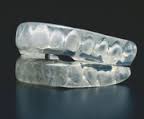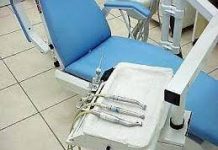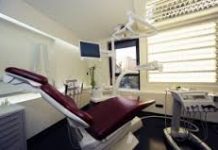Dental equipment.
Among the different dental appliances, dental devices are particular kind of devices invented for a specific purpose; these devices are designed for a sleep problem known as obstructive sleep apnoea (OSA), a condition in which relaxation of the muscles around the tongue and throat causes the tissues to block airflow during sleeping.
This condition is quite common and can be treated with a so-called CPAP (Continuous Positive Airway Pressure) machine, which consists of three main parts: a mask, a motor that blows air and a large tube that connect the two, or with specific dental devices, or mouth guard or dental appliances; the dentist can help patients to decide which is the best options.
Dental devices are of two kinds: mandibular advancement devices (MAD) and tongue retaining devices (TRD). The first type, mandibular devices, is most widely used and it looks like a mouth guard used in sports: it works by moving the mandible forward so to open the airways; the tongue is attached to the lower jaw behind the chin. This appliance works against sleep apnea but also prevent from snoring.
Mandibular advancement device.
Mandibular advancement devices are discreet and seem to give an immediate improvement to the patient since the first night.
Tongue retaining devices work controlling only the tongue: these devices are like a splint that holds the tongue in place to keep the airways open. TRDs are considered less comfortable and generally take several weeks or months to be worn comfortably.
Sometimes it is possible to combine a CPAP machine with a dental device and when a CPAP is combined with jaw advancement, the CPAP can often be used at a much lower pressure setting.
Dental devices are most widely used than CPAP machines, but are for patients with a mild to moderate sleep apnea; doctors say these devices may work also to reduce or to improve the frequency and loudness of snoring. Of course, there are some downsides, including discomforts, altered bite, since some patients report an unusual sensation after removing the device in which they have difficulty bring their teeth together in the usual position, movement of teeth, pain, arthritis of the temporal mandibular joint, dry lips, and excessive salivation.
Dental device. Sleep apnoea.
Since obstructive sleep apnoea and other sleeping disorders may depend on many and different factors, dental devices may be prescribed and approved by the sleep physician, the primary care doctor, and the dentist.





